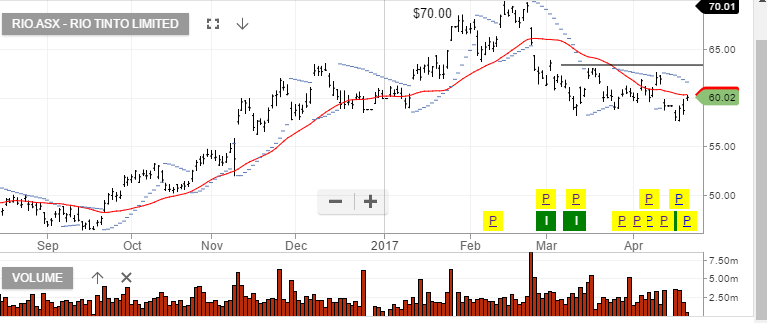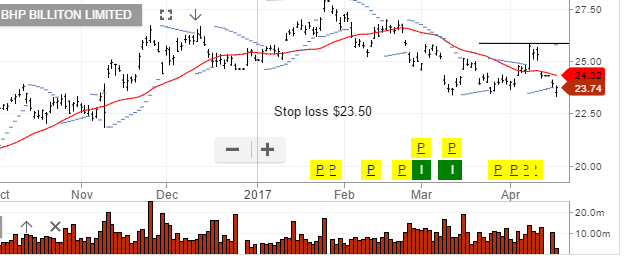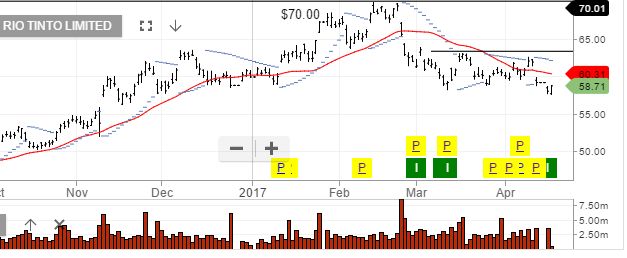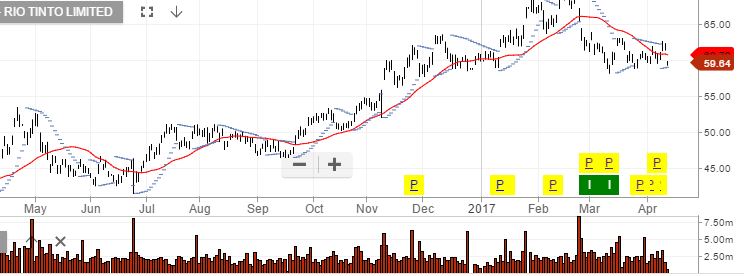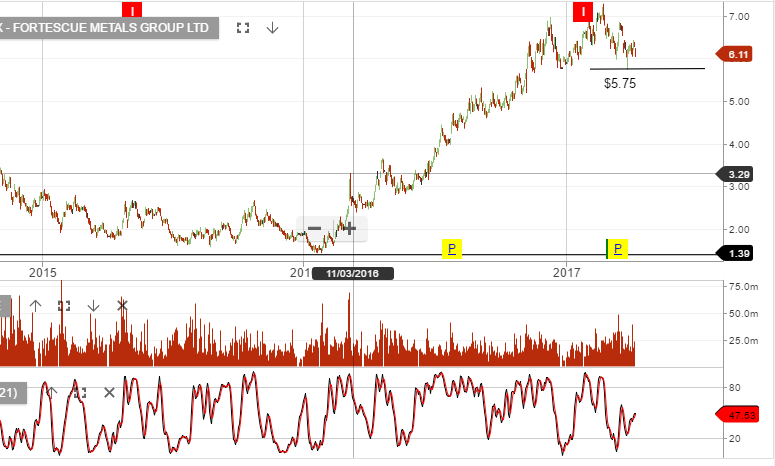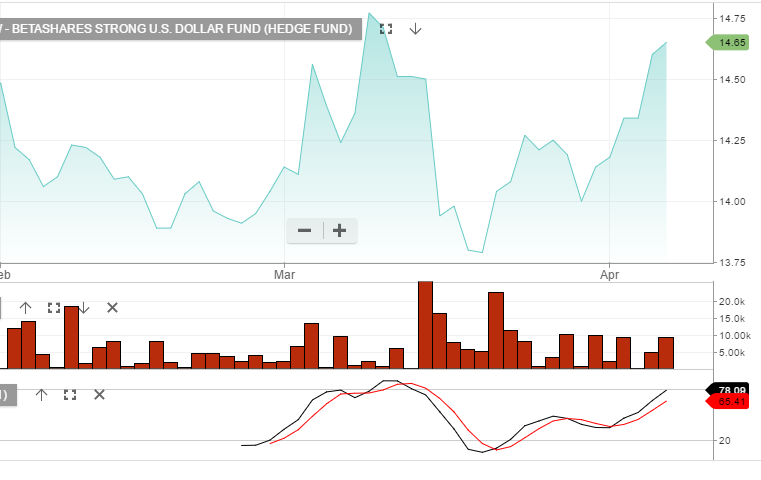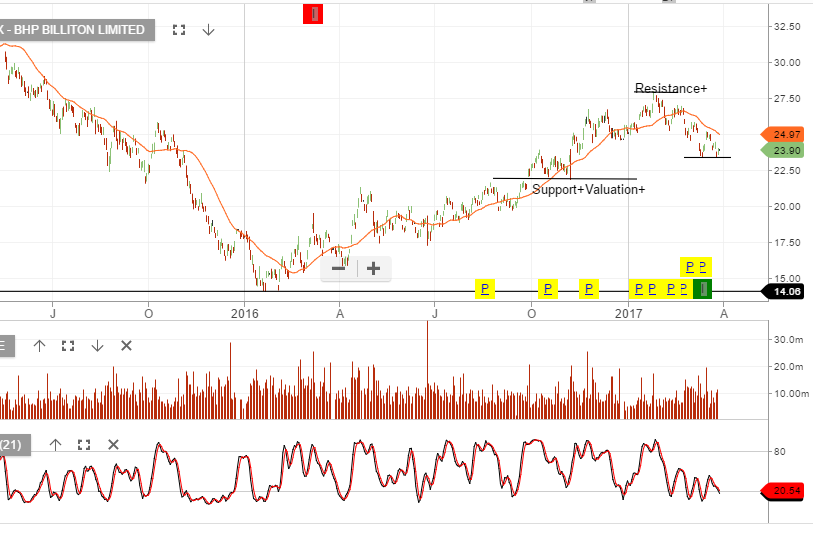RIO – 1H17 Earnings
RIO reported 1H17 underlying earnings of US$3.9bn, which was largely in line with market expectations. EBITDA of US$9.0bn was also in line.
Lower capex resulted in cash flow and net debt coming in slightly better than exceptions (gearing now 13%) with net debt end of June US$7.6bn.
Buy-back was boosted by US$1.0bn increase, helping to offset a softer interim dividend. The interim dividend announced was US$1.10 and assumes 50% payout ratio.
In 2018 we expect RIO to see flat earnings growth at best, and we have the stock trading on a forward yield of 4.5%.
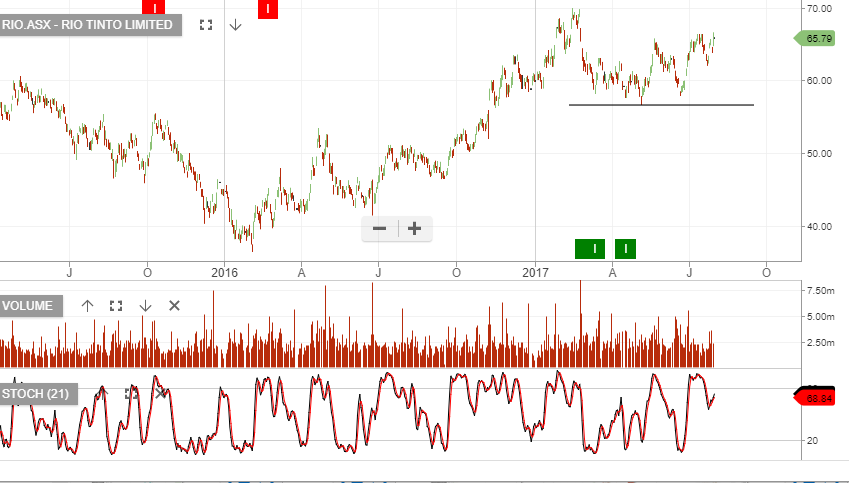

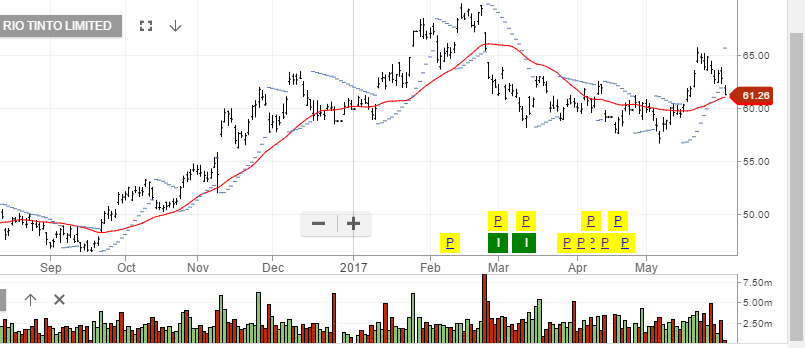 Rio Tinto
Rio Tinto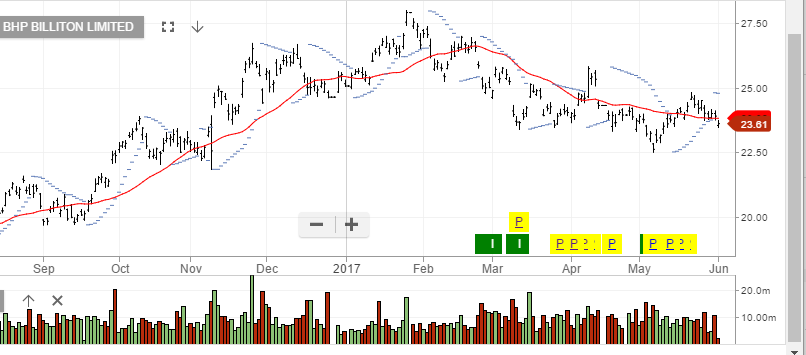 BHP
BHP
